The first laboratories of the ÓE Science and Innovation Parks were inaugurated
Universities need to be engines of economic and social transformation," stated Minister of Finance Mihály Varga at the inauguration of the first phase of Obuda University's Mechatronics Science and Innovation Park in Székesfehérvár. As part of the University Day event series on November 21st and 22nd, the Obuda University reported on the launch of developments in all three locations—Székesfehérvár, Kaposvár, and Zsámbék. Project leaders provided insights into innovation management, an investor-oriented approach, and the university's increasingly close collaboration with economic stakeholders, which are key pillars shaping the future of Obuda University. Rector Prof. Dr. Levente Kovács emphasized that these pillars also form the foundation of their science and innovation parks. The presentation of the Zsámbék project involved Zoltán Marczinkó from the Ministry of Finance, and Bódis László, the State Secretary for the Ministry of Culture and Innovation, participated in the Kaposvár presentation.
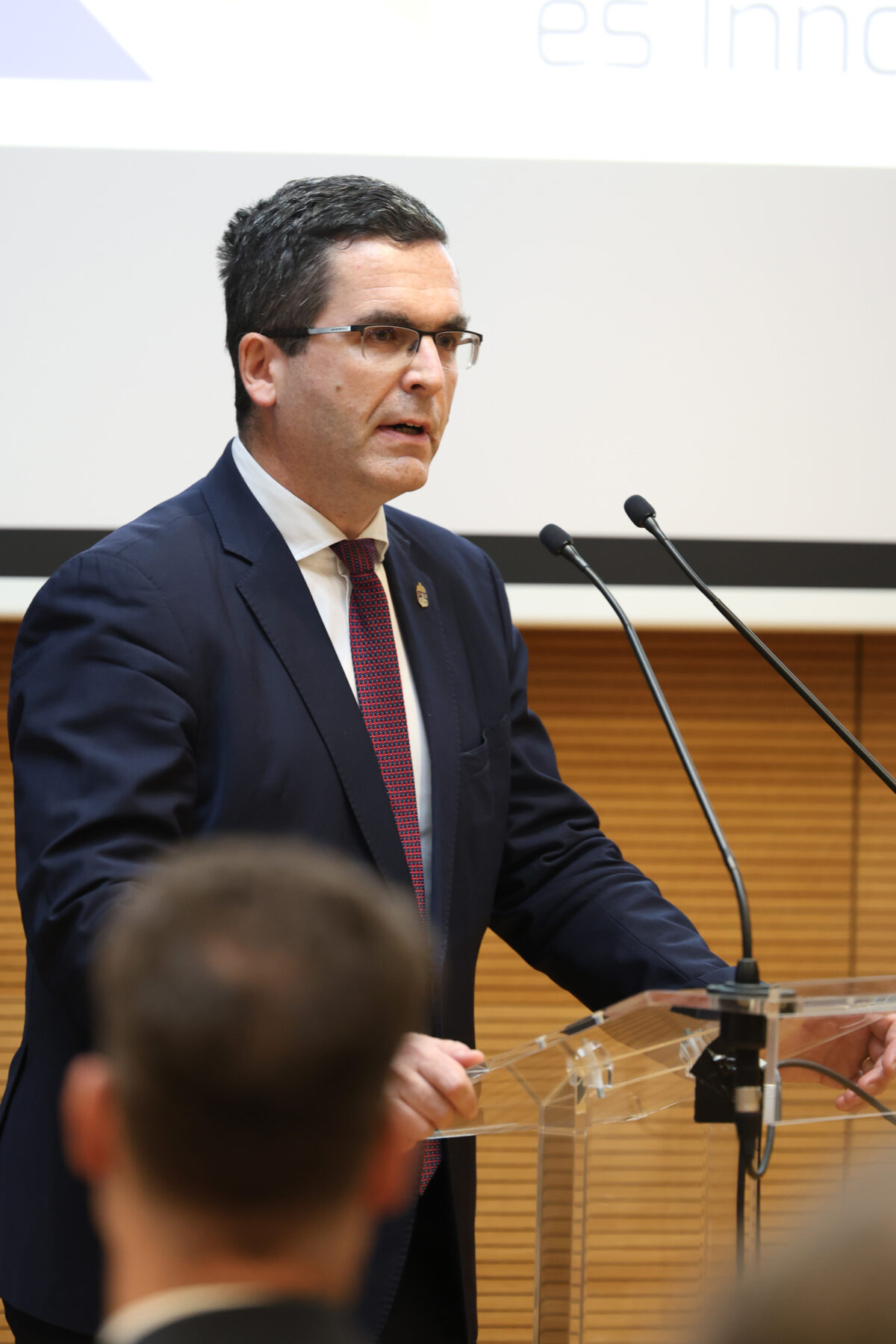
He explained that the science parks of Obuda University are planned to be realized in the concept of the 'digital twin.' This means that the workshops built on the investment site will serve as creative spaces, supplemented by the knowledge and intellectual capital provided by the university's emerging young and talented engineers. In this way, Obuda University's development plans align with innovation goals driven by industrial players. Companies commission possible ideas that will be implemented on the developing factory site.
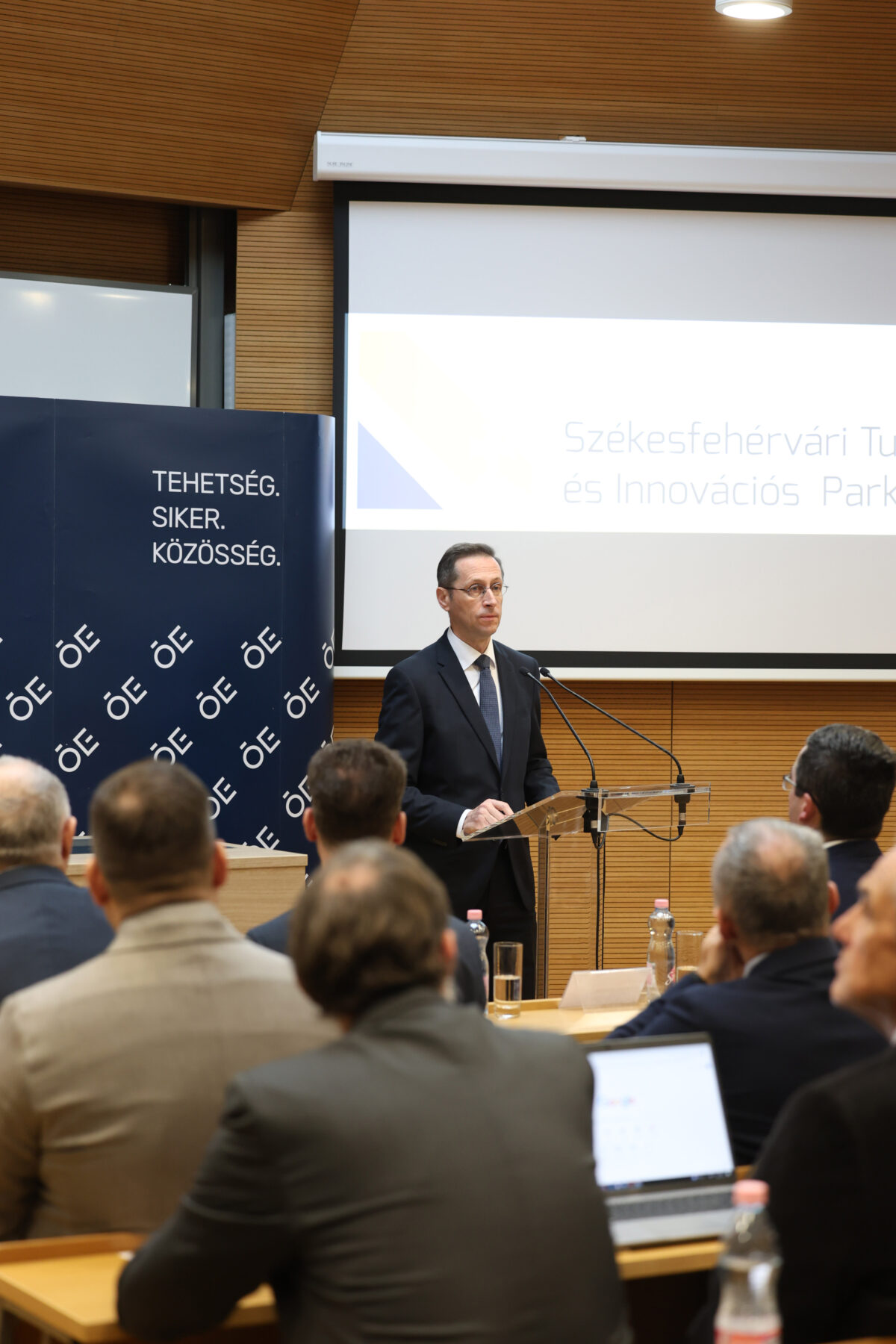
The government's aim is for universities to become engines of economic and social transformation, collaborating with the economy to significantly enhance Hungary's competitiveness," emphasized Mihály Varga. The minister referred to the investment in Székesfehérvár as an important milestone, praising the fact that the developments are seamlessly integrated into the economy.
Dr. András Cser-Palkovics, the mayor and chairman of the board of trustees of the Rudolf Kalman Foundation for Obuda University, spoke about, among other things, how the science parks can be integrated into the campus development plans of Obuda University in Székesfehérvár, Kaposvár, and Zsámbék. He emphasized that they represent significant opportunities for the municipalities, students, industry, and the university alike.
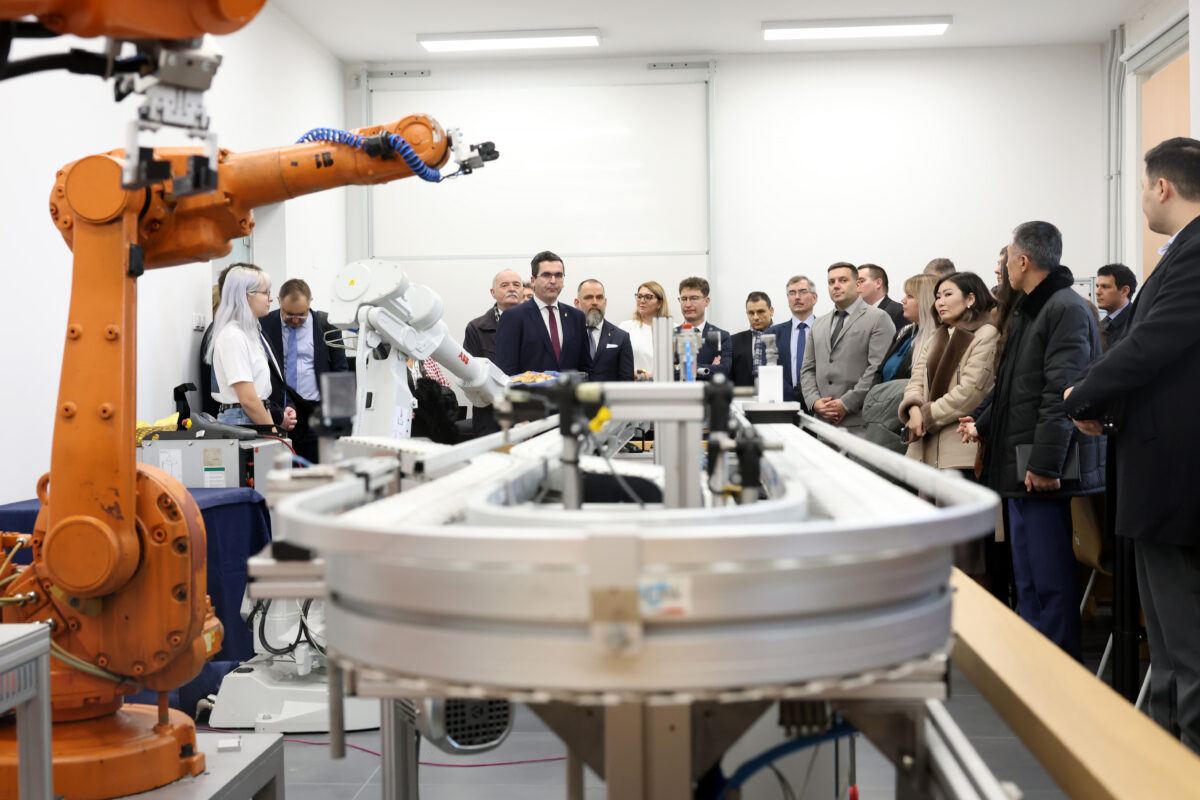
Mechatronics Science and Innovation Park in Székesfehérvár
As the first phase of the developments in Székesfehérvár, four laboratories were inaugurated on November 21 at the Alba Regia Technical Faculty (AMK), in the Science Park buildings 'S' and 'C1,' as well as in the university building 'F.' Professor Dr. György Györök, the dean of AMK, stated that a total of 21 laboratories will be established within the entire network on the university campus. The central element of the project is research, development, and innovation based on collaboration with economic stakeholders. The developments will be implemented in collaboration with local and regional economic players by December 31, 2026.
In the laboratories, they research, model, develop, and demonstrate Industry 4.0 processes, modern industrial technologies, and robot and drone technology.
The goal of the Industry 4.0 laboratory is the research and development of modern industrial technologies, as explained by Zoltán Szilágyi. The aim is to make various technological solutions accessible to companies, conduct case studies, tests, and experiments. The laboratory integrates knowledge in automation, mechatronics, and information technology. The laboratory's toolkit includes not only complex mechatronic stations but also various tools for mobile robotics, image processing, and industrial informatics. The main research directions include industrial informatics, data collection, machine vision, sensor networks, sensor fusion, and mobile industrial robotics.
The recently inaugurated VR laboratory is suitable for modeling and investigating work in an industrial environment and developing software for such VR environments, informed Dr. habil. Éva Nagyné. Using computer graphics, as well as photogrammetry and laser scanning surveys, it is possible to create 3D models and develop and test interactive VR applications through them. They have also acquired virtual and mixed reality HMD (Head Mounted Device) devices, Intel Realsense motion-tracking sensors, handheld scanners, and a comprehensive 360° photo and laser scanner for surveying larger areas.
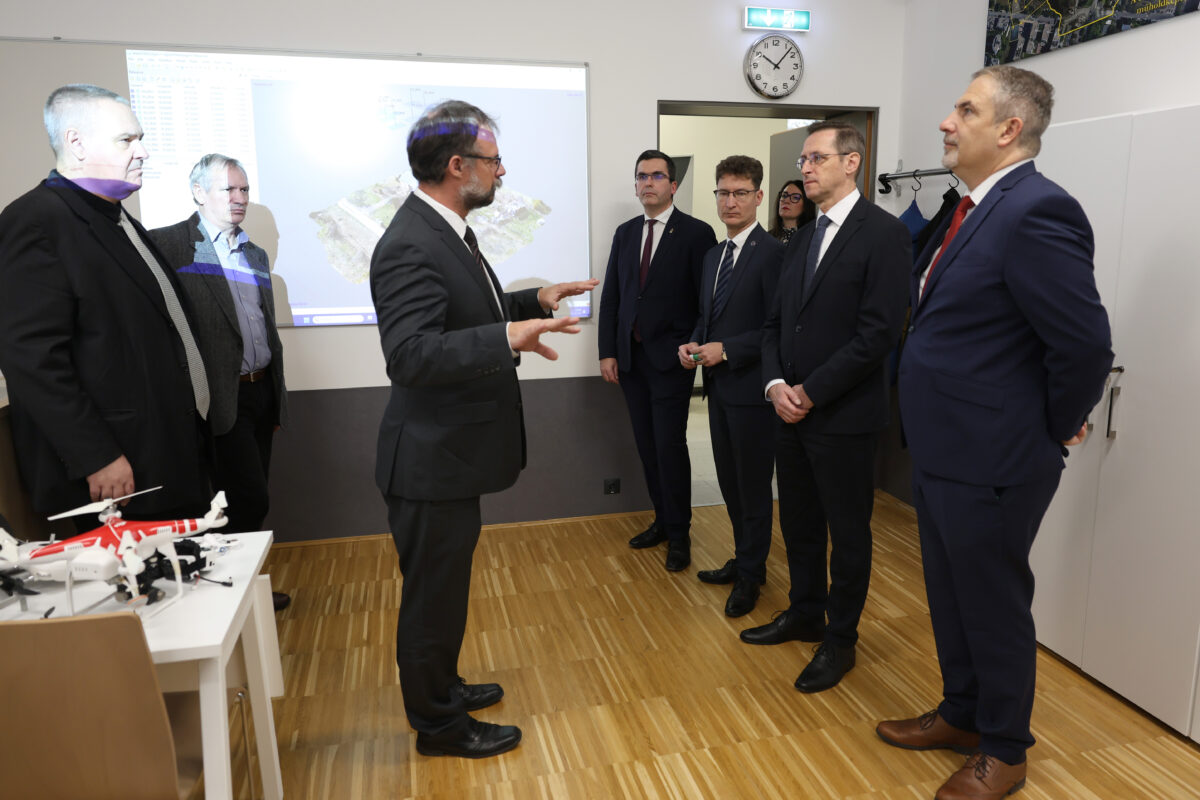
The Drone Laboratory was introduced by Professor Dr. András Molnár, General Vice-Rector. The laboratory, created for presenting drone technology and processing and analyzing remote sensing data obtained through aerial reconnaissance, supports processes in precision agriculture, surveys of buildings in the construction industry to create 3D models, and assessments of the condition of built infrastructure. The main research directions include the application possibilities of unmanned aerial vehicles, drone swarms, precision agriculture, and autonomous systems.
The Robot Laboratory is capable of hosting student and research groups of 10-12 people, explained Dr. Károly Széll. Their equipment allows for the exploration of several significant industrial robot manufacturing devices, software and hardware testing, as well as the implementation of machine vision tests, human-machine communication, complex automation, and robot safety projects. The main research areas include machine vision, robot and camera integration, robot safety technology, complex robot task execution, and complex programming.
Future Industry Science and Innovation Park in Zsámbék
The university's outstanding and high-quality professional work is complemented by a highly developed infrastructure, providing a good chance for the Obuda University community to advance. The laboratory developments also contribute to ensuring that students receive even higher-level education," stated Zoltán Marczinkó, Deputy State Secretary responsible for economic analyses and priority support programs at the Ministry of Finance, during the inauguration of the first phase of the Zsámbék development on November 22.
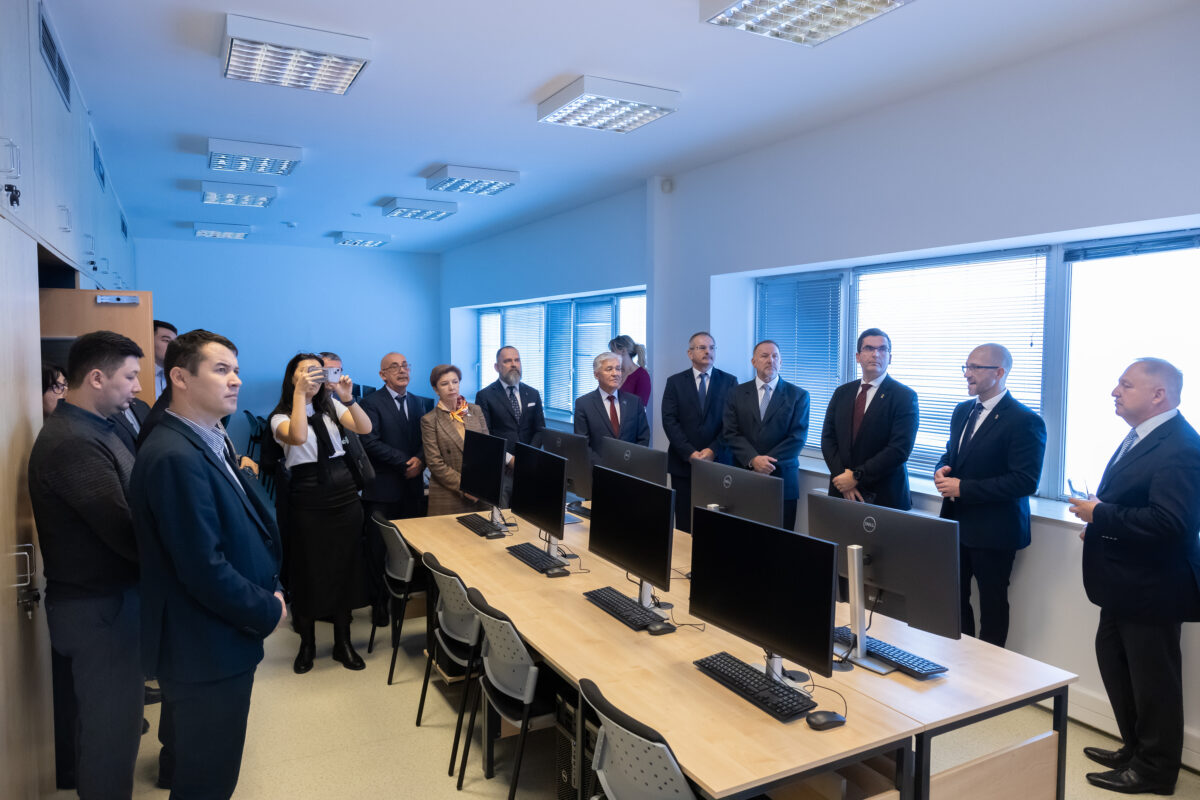
The highlighted areas among the laboratories include cybersecurity, energy communities, AR/VR/XR, healthcare, space technologies, as well as artificial intelligence and smart architecture," stated Dr. György Eigner, the dean responsible for the professional work of the Zsámbék investment at the Neumann János Faculty of Informatics. The Zsámbék Science Park focuses on building a business portfolio that utilizes its own ecosystem, integrating elements of Obuda University's innovation ecosystem. The introduced R&D and educational infrastructure concentrates on market demands and partner enterprises committed to participating in the Park.
During the program, they presented the Cybersecurity infrastructure, including the Cybersecurity Training Center (cyber range pilot infrastructure) and the Cybersecurity Operations Center (Security Operation Center pilot infrastructure). Dr. Rita Fleiner introduced a self-developed, artificial intelligence-based IoT system for energy communities. On the same day, the AR/VR/XR pilot research and development laboratory were inaugurated, primarily serving research and development purposes, equipped with excellent prototyping capabilities.
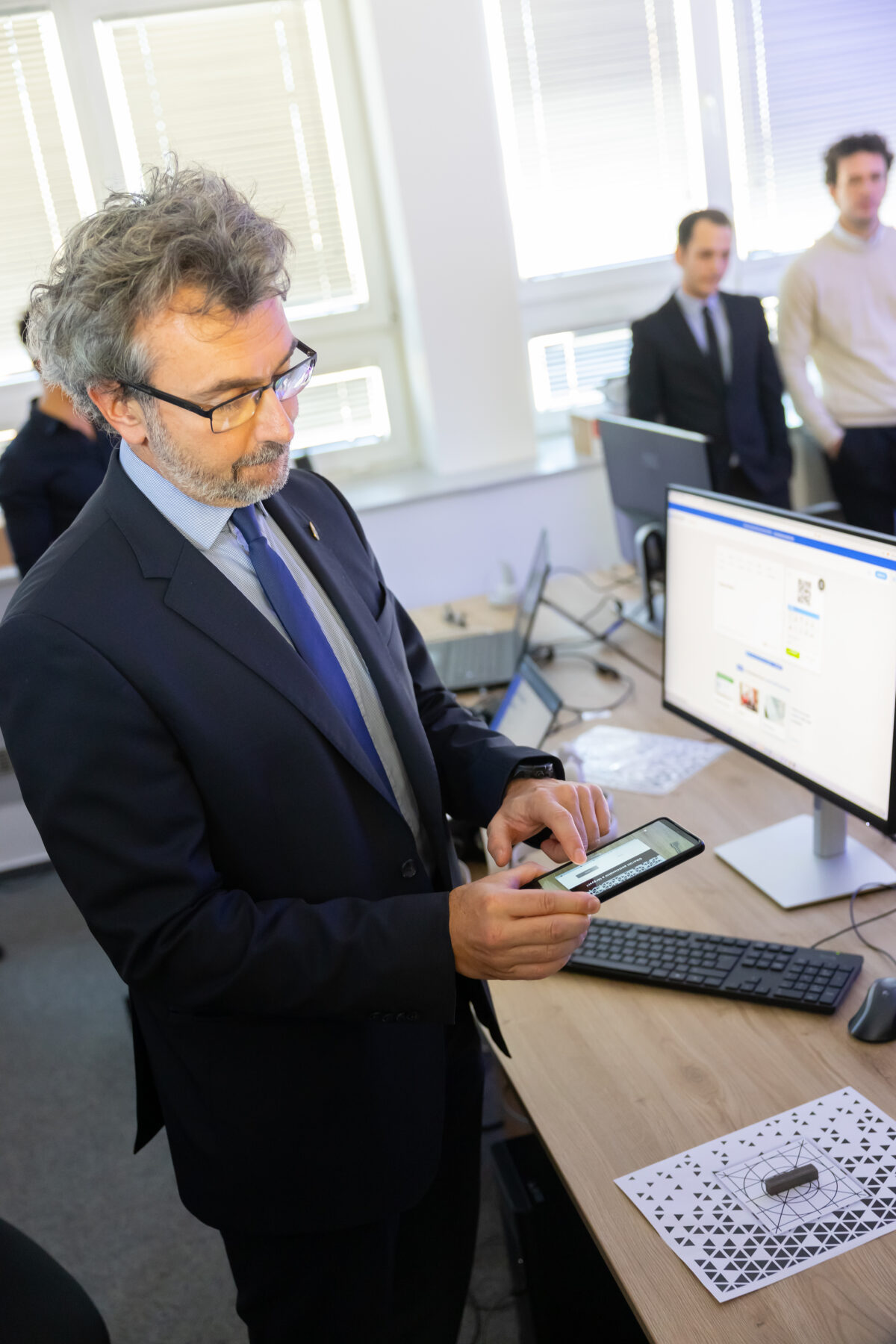
Prof. Dr. Imre Felde presented the development results of HoloLens 2, Miklós Vincze showcased the virtual possibilities of pathological examinations, and Eric Noboa conducted a PlatyOUs VR demonstration.

Smart Industry Science and Industrial Park in Kaposvár
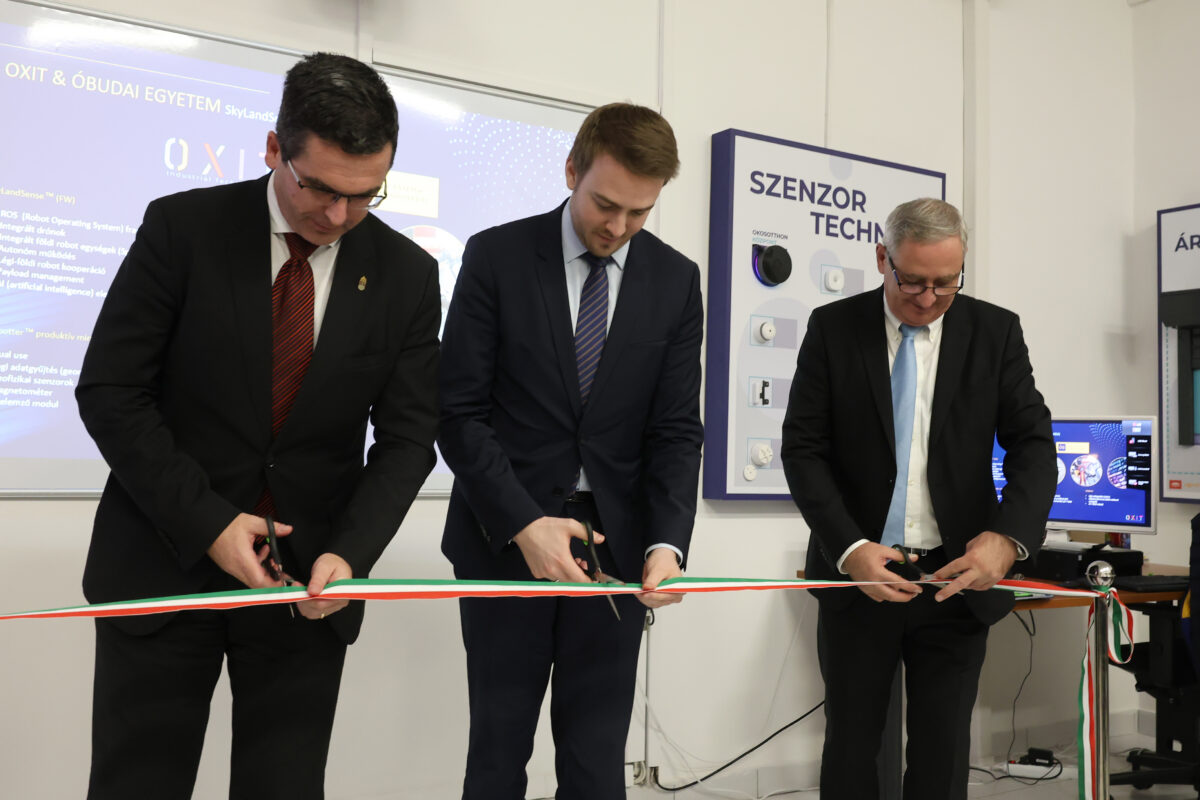
As part of the initial phase of the developments in Kaposvár, the inaugurated Visitor Center and Showroom showcase the IoT devices and applications of the SMART HOME system. It aims to popularize technical education, attract attention, stimulate interest in the scientific (STEM) field for students, and, with an open laboratory concept, engage in research on SMART solutions, their security, individual or group testing, application testing of unique technologies, and exploration of mobile robot technologies.
Professor Dr. Zoltán Rajnai, the dean of the Bánki Donát Faculty of Mechanical and Safety Engineering, explained that with the establishment of the Smart Industry Science and Innovation Parks in Kaposvár and Budapest, the primary goal of Obuda University is to create smart industry research, development, and innovation synergies that combine interdisciplinary areas with a focus on Industry 4.0. These synergies should be capable of solving joint research, development, and innovation tasks with industrial partners in both regions. As part of this initiative, investments ensuring the research and development of civil defense technologies and installing opportunities carrying uniqueness have been prioritized. The KTIP focuses on innovative applied scientific research with innovation impacts extending to environmental protection, smart architecture, electrical engineering, materials science research, as well as increasing the workforce situation in the Somogy region, boosting the economy, and strengthening the defense industry. The KTIP collaborates with industrial companies implementing research tasks in Kaposvár, forming a unique 'smart manufacturing' construction, alongside the hierarchical operation and collaboration of the Budapest campus with virtualized laboratory and simulation environments.
László Bódis, Deputy State Secretary for Innovation, expressed that the government places collaborations between universities and companies at the forefront of Hungarian innovation policy. Currently, only 11% of innovation-focused companies collaborate with higher education institutions. The goal is to increase this indicator by at least 25% by 2030. Science Parks can be excellent platforms for collaboration, and the innovations arising from these partnerships, involving all players in the triple helix model— the state, universities, and companies—will be advantageous for everyone. Revenues generated from innovations will contribute to increasing funds for education and research. Innovation and knowledge play a crucial role in our global competitiveness, serving the well-being of Hungarian society through economic and social achievements. We remain committed to the development of Science Parks in the future.
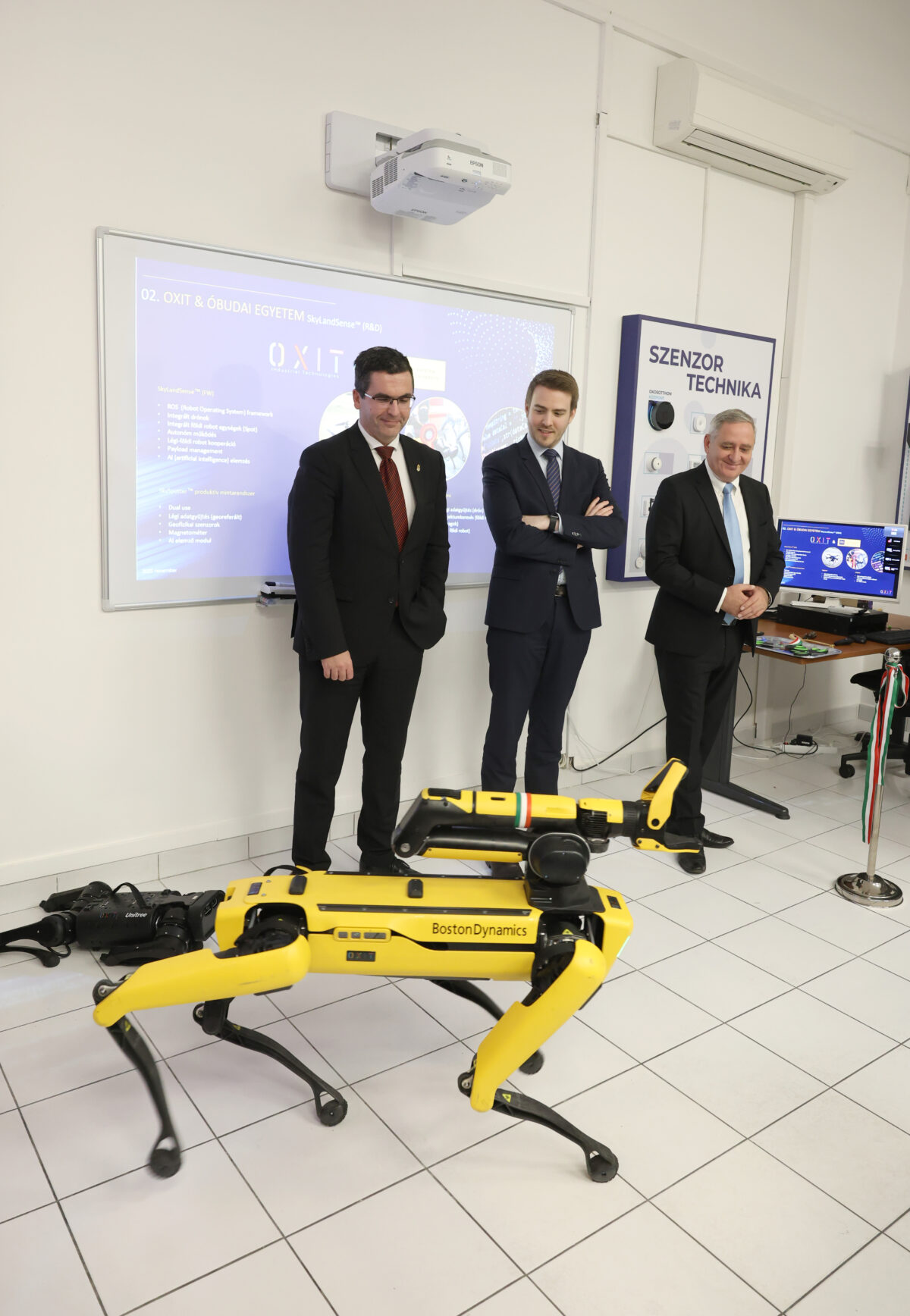
Further on, Professor Dr. Zoltán Rajnai presented the drone-mobile robot cooperation development project. As a result of research and development, he showcased a reconnaissance procedure for ammunition and explosives, supported by data visualization procedures, developed in cooperation between drones and easily maneuverable mobile robots in the field. The presentation of the Smart Home laboratory was delivered by Gergely Kálmán.
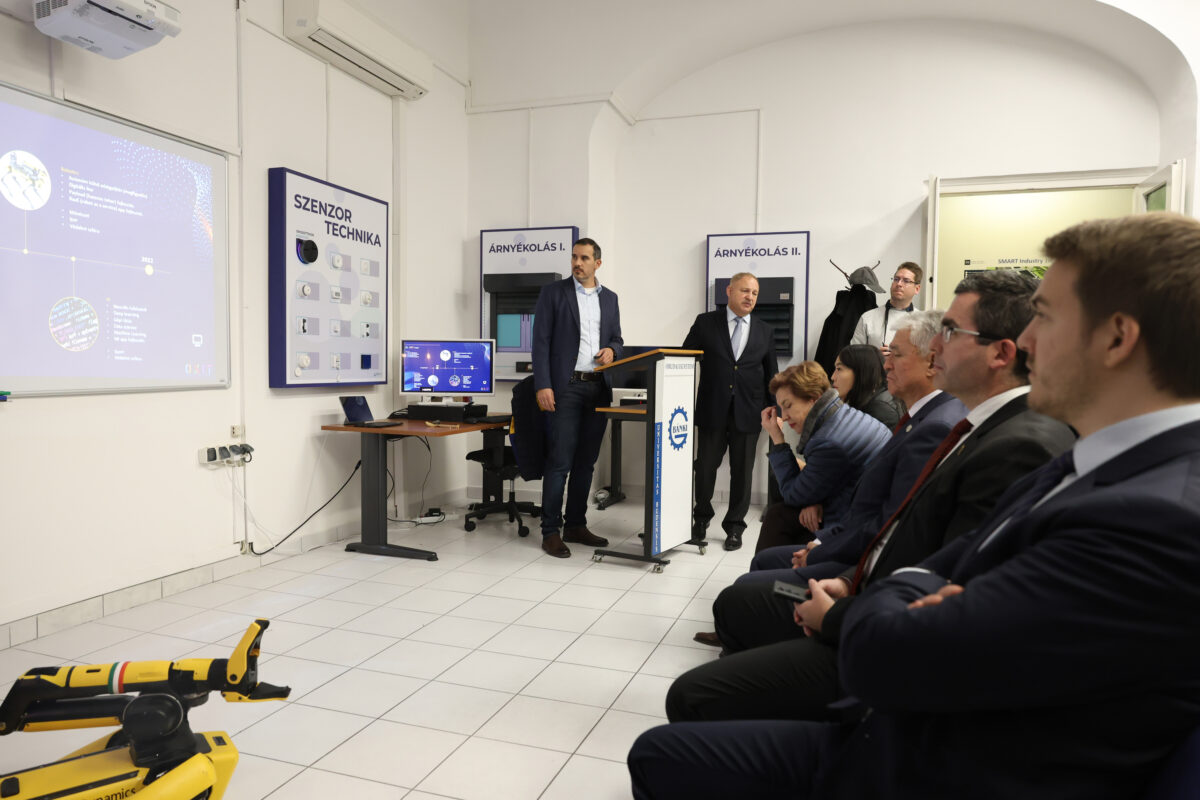
Tamás Eszes, employee of OX-IT Ltd., presented the details of the patient monitoring system development.
The Visitor Center serves as a venue for presentations and professional events. The presentation and exhibition space also function as a development laboratory, where development programs are conducted with the involvement of industrial partners. The socialization and presentation of industrial and manufacturing processes are important for establishing collaborations and maintaining public interest. The Visitor Center also operates as an open laboratory, welcoming the interest of the public and industrial partners. It makes its capabilities and capacities available to support individual enthusiasts as well as companies interested in Industry 4.0 systems in developing and implementing digitization strategies.
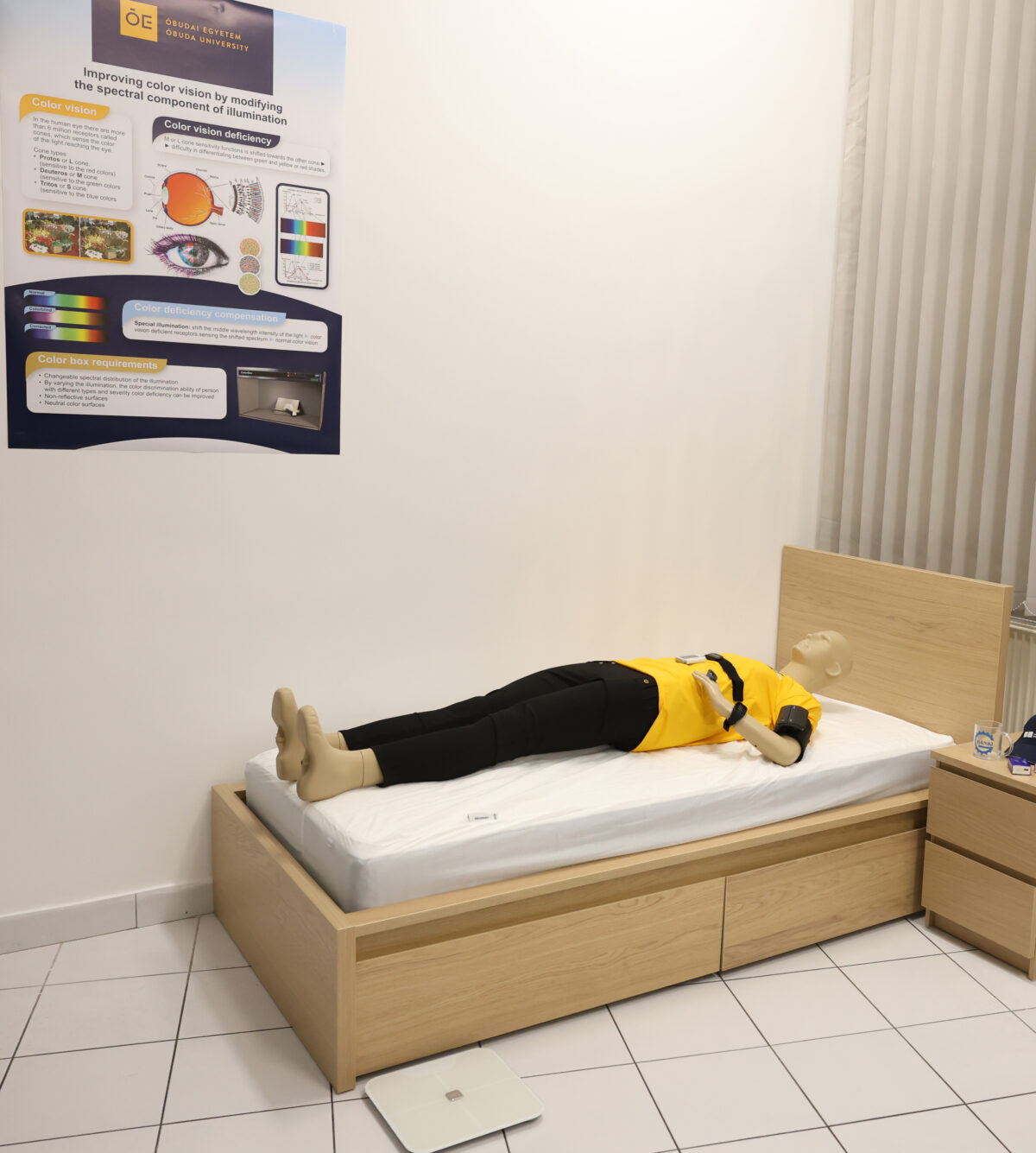
Dr. habil. Edit Laufer explained that in the Visitor Center, modern SMART HOME devices, impressive robot technologies, patient monitoring systems, and equipment suitable for testing color blindness assist in navigating through cutting-edge technologies.
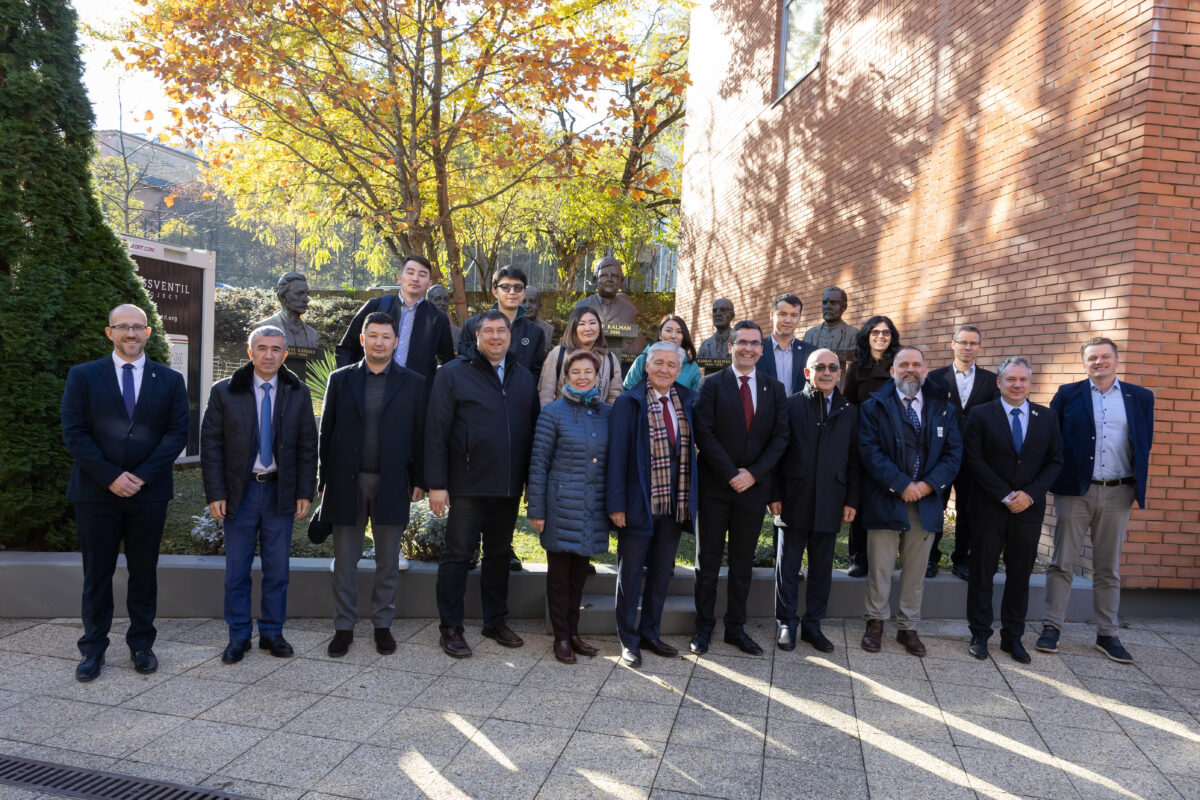
At the invitation of Prof. Dr. Levente Kovács, the rector, delegations from Uzbek and Kazakh partner universities attended all events related to the University Day, including the laboratory inaugurations.
